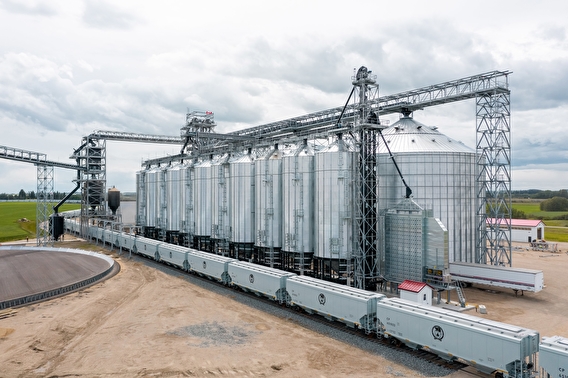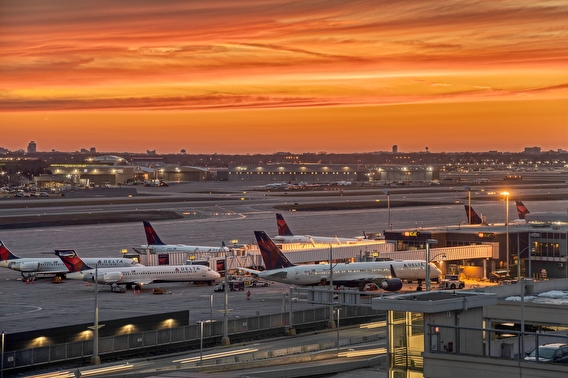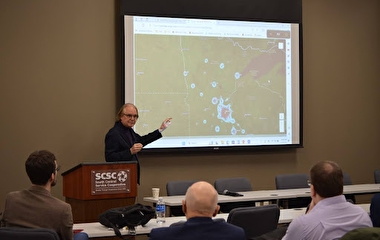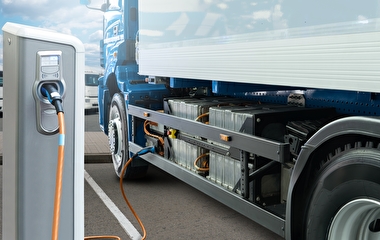
Transportation and supply chains are poised to become a central focus for Minnesota legislators this session. In a January forum, CTS and the U’s Transportation Policy and Economic Competitiveness (TPEC) Program convened experts to examine the businesses and supply chains that are key to Minnesota’s economy, with attention to the ongoing impacts of the COVID-19 pandemic. The forum was organized in response to interest from Representative Frank Hornstein, chair of the Minnesota House Transportation Finance and Policy Committee.
“The [COVID] crisis has really shown how critical transportation infrastructure is in our lives: In the case of vaccine distribution and grocery stores, it was literally keeping people alive,” Hornstein said. “Just like everything else in COVID, we saw some areas of weakness that need improvement, and that is really what we need to do as we move forward in transportation.”
Network resiliency
Forum participants included representatives from both the private and public sectors as well as the research community. During a panel discussion of consumer and freight transportation considerations, network resiliency from the first to last mile was a key focus. “Freight doesn’t work unless the entire system works,” said Bill Gardner, director of the Minnesota Department of Transportation’s Office of Freight and Commercial Vehicle Operations. “One weak link can adversely affect travel time, costs, and the economic competitiveness of Minnesota.”
BNSF Railway’s Gregg Zody has seen the ripple effect of a transportation tie-up firsthand. “Especially on the West Coast, there is a big opportunity to move more goods into the interior of the country,” said Zody, general director of consumer products. “However, we’ve actually had equipment there sitting idle due to the backup at the ports.”

At the Port of Duluth, the scarcity of shipping containers has demanded creativity. “We have flexible service at our intermodal terminal and have seen customers switch back and forth between shipping and rail based on container availability and freight rate considerations,” said Deb DeLuca, Port of Duluth executive director.
When air travel plunged during the early months of the pandemic, Delta’s cargo business was the only revenue source for the company. This period marked the first time Delta operated cargo-only flights, said Jeff Davidman, the airline’s vice president of state and local government affairs. “Cargo will have a seat at the table and a larger voice as we build our network back and decide where our flights will go,” he said. “[They] will still be our passengers’ flights, but that cargo that fills the belly of the plane will be important as well.”
Statewide concerns
A second panel focused on industry and economic considerations. Bob Kill, CEO of Enterprise Minnesota, shared findings from his organization’s most recent State of Manufacturing survey. Supply chains topped the list of concerns for Minnesota manufacturers—particularly those outside the Twin Cities metro—followed by challenges in attracting qualified workers. “Wherever you go in the state, our data shows that attracting workers is a top concern for manufacturers,” he said.
The trucker shortage is also the primary issue facing Minnesota’s large agriculture industry sector. According to Minnesota Department of Agriculture Commissioner Thomas Petersen, moving agricultural products and fertilizer has become a major challenge for agricultural companies and farmers. Additionally, COVID has altered the way the state’s food supply chains operate. “Before COVID, Minnesotans ate out more than they ate in; after COVID [started], they were eating at home 80 percent of the time,” Peterson said. “Many of those changes have stuck with us, which is affecting the supply chain.”
Connie Carlson, statewide co-director of the University of Minnesota Extension’s Regional Sustainable Development Partnerships (RSDP), noted that supply chains were a concern in rural Minnesota even before the pandemic. She cited the example of an RSDP pilot project that connected small- and medium-sized farms to wholesale markets through “backhauling,” an approach that uses the return trip of a delivery truck to carry locally grown foods from rural grocers back to wholesale distribution centers (see story in the January 2018 Catalyst).
Two other panelists presented national and international perspectives. Ben Bidwell, director of North America customs and compliance for CH Robinson, said the trade landscape is more complex than ever, and “there’s no sign of it … getting any easier.” Importers and the trade community need to stay well informed about the impacts of pending legislation—such as tariff policies with China—on their business costs.
Trevor Sutton, fellow with the Center for American Progress, turned to the importance of domestic supply chains for clean energy technology. The energy and transportation sectors are “in all probability pivoting sharply to a radical transformation of both sectors,” he said. Rapid growth in the electric and zero-emission vehicle (ZEV) sector could create opportunities for domestic suppliers, "but we shouldn’t assume that,” he warned, given competition from other countries—above all, China. “The next decade presents a kind of do-or-die opportunity when it comes to creating the supply chain to support renewable energy generation and electric vehicles,” he said. “Many of the supply chain relationships that develop over the next 10 to 20 years are going to be quite sticky and will likely define those industry supply chains well into the 21st century.”
Communication, coordination, and investments
In closing, CTS director Kyle Shelton remarked on the key themes that emerged throughout the discussion. “There is the ongoing pressure of balancing the investments we need to make in our physical infrastructure and ensuring we are innovating on the technological side, making sure we’re keeping up with workforce needs, and connecting people throughout greater Minnesota,” Shelton said. “The through line is communication and coordination. Our state leaders can help keep the conversations going between our transporters, manufacturers, and producers.”
According to Hornstein, the forum will help inform the big work the Minnesota legislature needs to do this session to move forward with investments supported by the new federal infrastructure bill. “This is the largest transportation investment since the New Deal, and it’s our job to ensure we garner every dollar that is available to us,” Hornstein said. “We welcome thoughts and ideas as to how we can do our part in Minnesota, knowing we are part of a national and international supply chain that lies at the intersection of so many important issues.”
A recording of the forum is available on the TPEC website.
Writer: Megan Tsai


